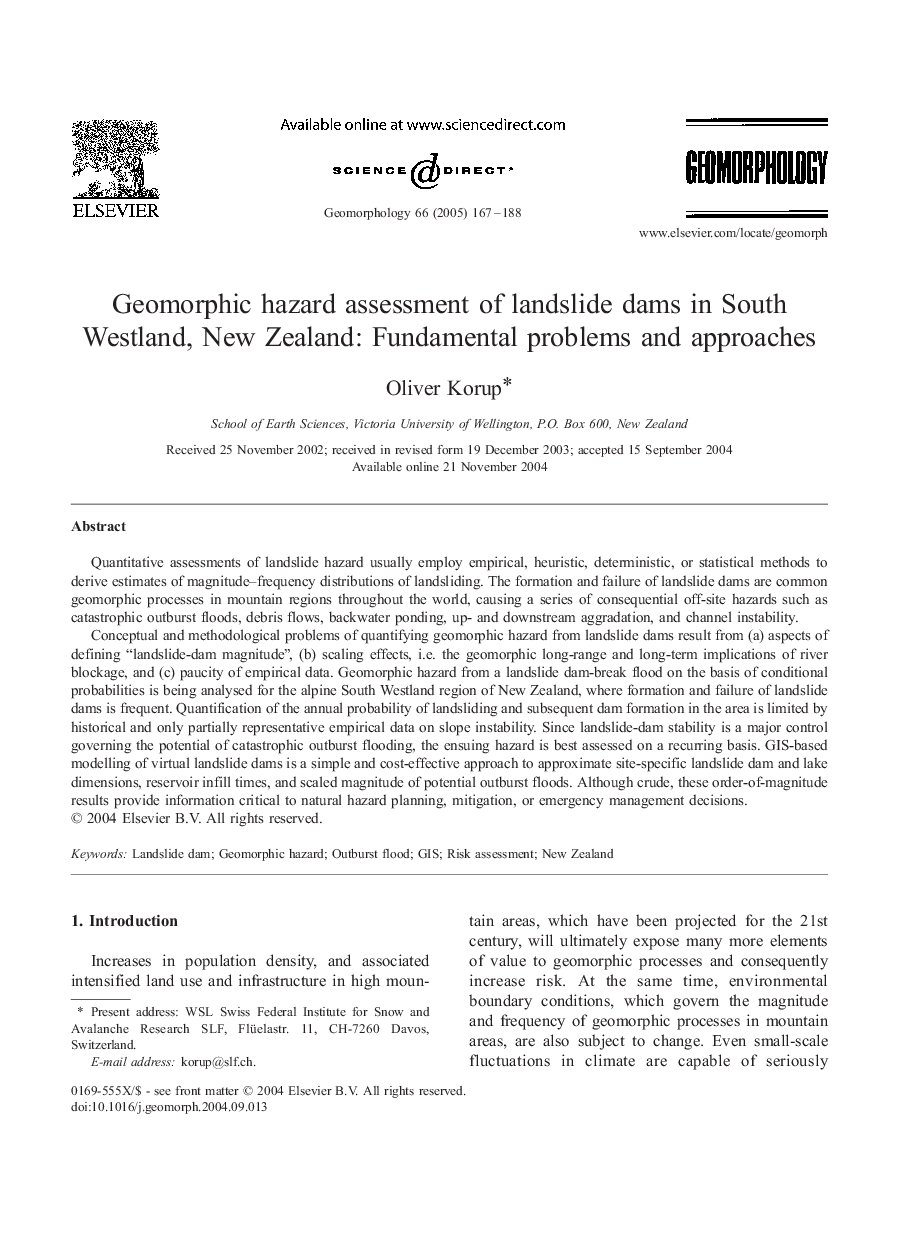| Article ID | Journal | Published Year | Pages | File Type |
|---|---|---|---|---|
| 9524960 | Geomorphology | 2005 | 22 Pages |
Abstract
Conceptual and methodological problems of quantifying geomorphic hazard from landslide dams result from (a) aspects of defining “landslide-dam magnitude”, (b) scaling effects, i.e. the geomorphic long-range and long-term implications of river blockage, and (c) paucity of empirical data. Geomorphic hazard from a landslide dam-break flood on the basis of conditional probabilities is being analysed for the alpine South Westland region of New Zealand, where formation and failure of landslide dams is frequent. Quantification of the annual probability of landsliding and subsequent dam formation in the area is limited by historical and only partially representative empirical data on slope instability. Since landslide-dam stability is a major control governing the potential of catastrophic outburst flooding, the ensuing hazard is best assessed on a recurring basis. GIS-based modelling of virtual landslide dams is a simple and cost-effective approach to approximate site-specific landslide dam and lake dimensions, reservoir infill times, and scaled magnitude of potential outburst floods. Although crude, these order-of-magnitude results provide information critical to natural hazard planning, mitigation, or emergency management decisions.
Related Topics
Physical Sciences and Engineering
Earth and Planetary Sciences
Earth-Surface Processes
Authors
Oliver Korup,
